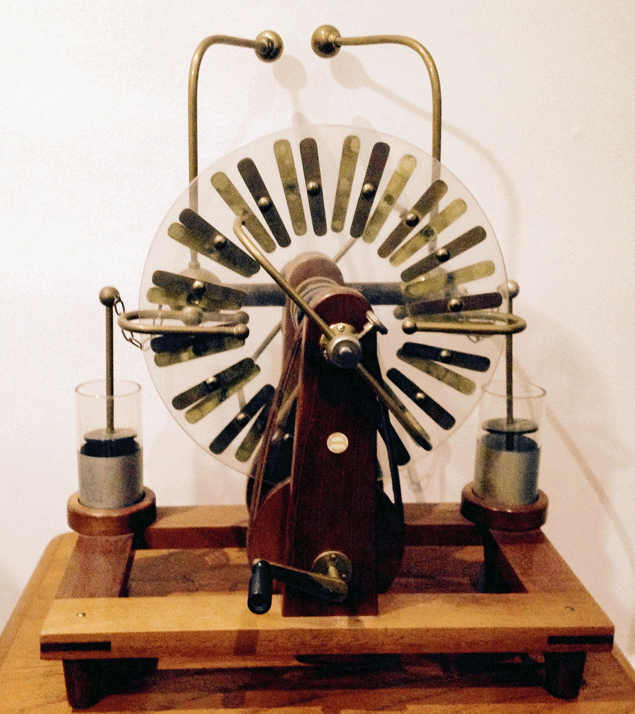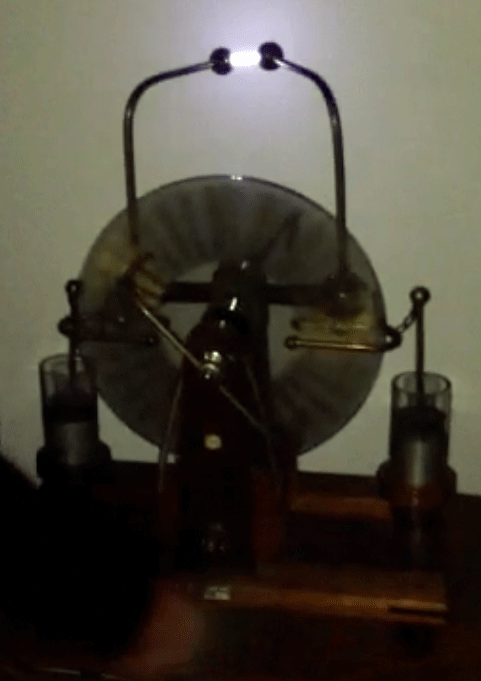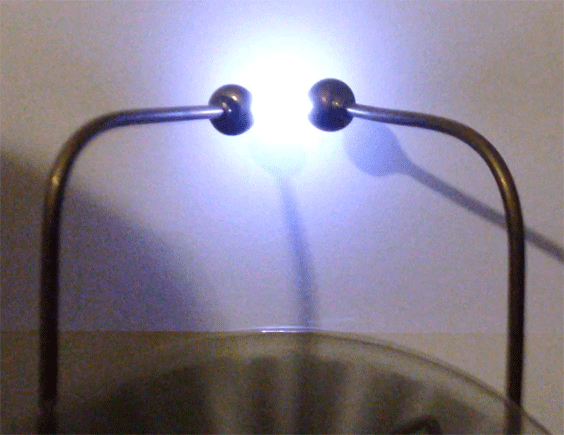 |  |
The Wimshurst Machine (or “Wimshurst Electrostatic Generator”) was developed by British inventor James Wimshurst over 1880–1883. It was the most stable means to that date of accumulating static electric charge until it reached such a high voltage that it would discharge across the air gap between two conductors. A crank handle rotates two insulating disks bearing a radial set of conductors in opposite directions by means of two belts (one with a twist). A static charge on one disk induces an equal and opposite charge on the other, the potential between t, and the charges being collecting by metal combs facing the disks. The charges are accumulated in “Leydon Jars”, these being the precursor to the modern capacitor. (The Leydon jars collect charge, with opposite charge induced on the external foil coating.)
This machine, still working well as seen in the pictures, was made by the firm Philip Harris Ltd, which in its prime was a leading supplier of British laboratory equipment. It was probably sold as a demonstration machine for schools or universities.
 |
Pages linked to this page
 This work by Jim Falk is licensed under a Creative Commons Attribution-NonCommercial-NoDerivs 3.0 Unported License Click on the logo to the left to see the terms on which you can use it.
This work by Jim Falk is licensed under a Creative Commons Attribution-NonCommercial-NoDerivs 3.0 Unported License Click on the logo to the left to see the terms on which you can use it.